5th Year
MONTHS
49-50
5th Year – Months 49-50
Your Child Is Four Years Old!
Your child is curious about many things and is so much fun. They can understand much of what you say and can teach you a lot about the world. The way a four-year-old sees the world is like no one else.
- Listen to your child when they talk. Your listening lets them know that they are important to you.
- Talk with them and ask questions about what they notice and think and feel.
Listen to your child’s fears, even if you do not understand them. Although they seem very independent, your child still needs lots of hugs and encouragement from you.
- The way you treat them is one way they learn how to feel about themself. Your care and respect help them feel like a worthwhile person.
- If you watch them closely, you will get clues about why they do what they do and how to help them grow.
What’s It Like to Be 49–50 Months Old?
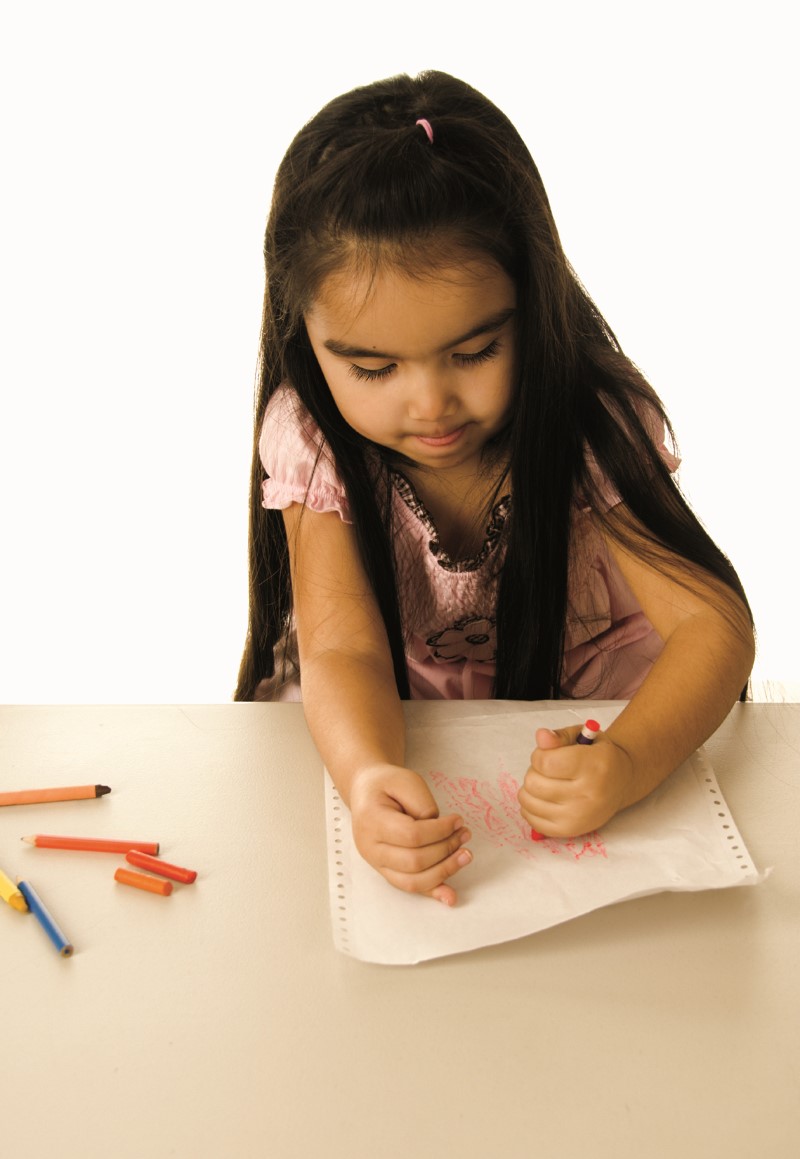
How I Get Along with Others
- I can share toys and play with others.
- I have a rigid understanding of what is right and wrong.
- I want to please and be helpful.
- I care about the feelings of others.
- I like to imagine myself doing things adults do.
- I have an active imagination and sometimes am afraid of ordinary things.
How I Move
- I can dress myself, except for tying my shoes.
- I can balance and hop on one foot.
- I can skip, gallop, and leap.
- I can draw shapes that stand for people and buildings and flowers and other things.
- I can cut on a line, but I’m not perfect at it.
- I can bounce and catch a ball.
- I can pay good attention to things that interest me.
How I Think & Learn
- I am curious and ask many questions.
- I imitate others.
- I can name simple shapes.
- I am beginning to recognize letters and numbers.
- I think that non-human things — like trees and the sun — think and feel like people do.
- I can repeat songs, finger plays, and stories.
Some children do things earlier or later than described here. Most differences are normal. Focus on what your child can do and get excited about each new skill. If you notice that your child is lagging behind in one or more areas for several months, use this list to talk with your doctor about your child’s development.
What Are the Best Toys for Learning?
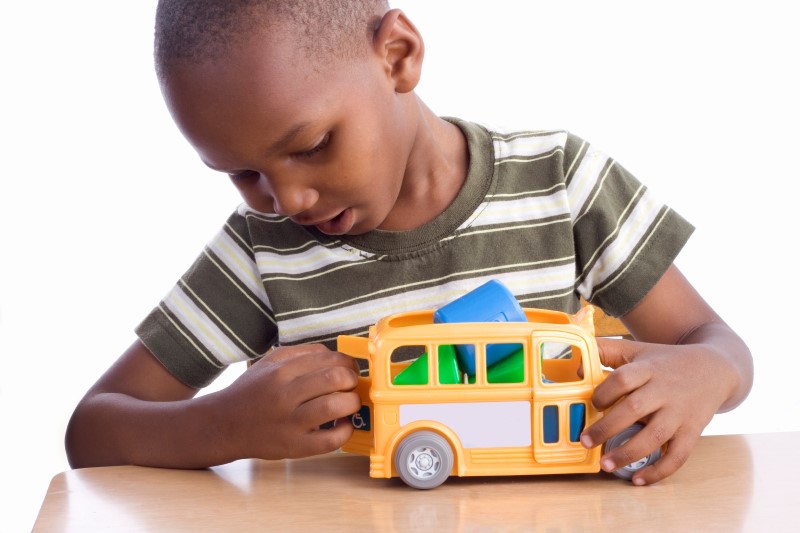
Children love toys. Toys are the tools of play and learning. Four-year-olds enjoy trucks, blocks, dolls, balls, dress-up clothes, and puzzles.
Children do not need a lot of toys, but they do need access to things that will help them grow.
- Books
- Puzzles
- Art materials: scissors, tape, glue, chalk, crayons, paper, play dough
- Dolls: safe cloth cuddly dolls, plastic-body dolls to wash, clothing for dolls
- Games: matching games, simple card games
- Places to safely play outdoors
- Balls that can be held in one hand and big balls —like beach balls and kick balls
What’s Missing in Our Relationship?

Your couple relationship is more than deciding who does the dishes, who cleans the bathroom, and who gives your children a bath.
- Good communication and problem solving skills aren’t the total answer to happiness in your relationship. There is more to it than that. In fact, some couples who have worked out all the kinks are still left wondering what’s missing.
- What might be missing is a deeper sense of shared meaning. Every couple has their own special way of doing things with their own customs, rituals, and traditions. This creates a feeling of closeness, belonging and knowing. This is who the couple is and what the couple does.
Shared meaning is created when couples share their innermost thoughts, feelings, dreams, goals, and plans for the future with each other.
- You may find that some of your goals are different from your partner’s goals. Luckily, it’s okay if you don’t always agree.
- The goal isn’t to always agree because that would be impossible.
- Instead, the goal is to create an environment where each of you is able to freely express your ideas even if you don’t agree.
Creating a sense of shared meaning around your roles as parents will help you grow closer. Talk about sharing your dreams and hopes for the future with each other. Use these conversation starters:
- When our child grows up, I hope others will describe them as…
- The most important thing we can give our child is…
- When we are grandparents, I hope we still…
Play Helps Your Child’s Problem Solving and Social Development
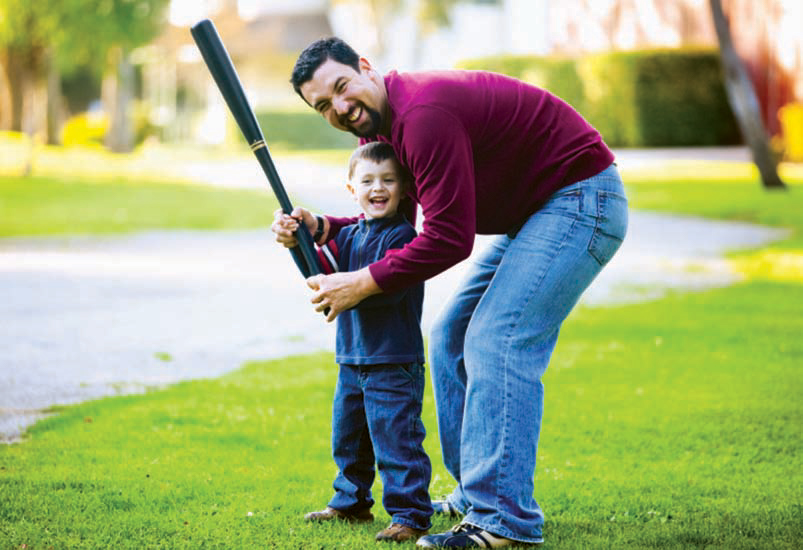
Play is fun but it also helps children grow and develop in many ways:
- Physically — because play often involves physical activity, it helps with gross and fine motor skills and body awareness.
- Socially — children need to belong and feel part of a group. Play helps children learn social skills, how to handle being left out sometimes, leadership, how to share power, space and ideas with others.
- Mentally — play helps children learn to wonder about the world around them, plan, problem-solve, learn language, and learn other skills and attitudes needed in school.
Young children whose parents play with them regularly tend to have skills that will help them be successful in school: problem solving, thinking, and exploring.
How Can You Help Your Preschooler Deal With Stress?

Preschoolers need loving reassurance and support. They have little control over their lives and are too young to use adult problem-solving skills to work through situations. Common stressful situations include:
- starting or changing child care or preschool
- the arrival of a new baby or family member
- being separated from a parent
- being disciplined
- toilet training
- worry that they will be deserted or starve
- fear of strangers
- scary things
- sickness
- the unknown
You Will Know That Your Child Is Suffering From Too Much Stress if They:
- has less energy than normal
- is crying more than usual
- has night terrors or nightmares
- has more frequent temper tantrums
- is more irritable
- becomes more clinging or demanding
What Can You Do?
Recognize stress warning signs and help your child through the difficulty.
- Help your child understand the situation. Explain what is going on in simple, reassuring language.
- Encourage your child to talk about their fears. They need to learn to say things like, “I don’t like it when the dog barks,” or “I’m afraid to go into that dark room.”
- Don’t tell your child that their fears are silly; they are very real to them. Ease their tension by offering understanding, support and plenty of affection.
- Holding and cuddling a young child will help to ease the stress.
- You can increase your child’s sense of security by remaining calm during times of difficulty.
When should you seek professional help? When you are not successful in attempts to help your child, or when the problem is too much for you to handle.
Why Does My Child Seem Afraid of the Dark at Bedtime?
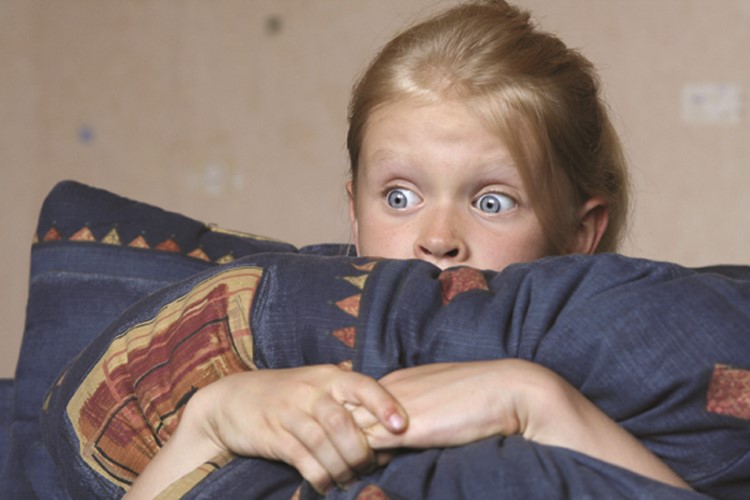
Thinking about scary imaginary things can still frighten your 4-year-old child. Your child may also be afraid of real objects. It can be baffling to parents to see their child jumping happily into bed and quickly falling asleep one night, but crying because you turned the light off the next night.
Being afraid of the dark may continue until your child is six years old, and sometimes older. Reassurances by parents, and even a night-light or flashlight, can help comfort a child frightened by the dark.
Have Fun Together by Creating a Picture Strip
Making a picture strip of one of your child’s familiar routines is a great way to develop pre-reading skills.
- Take a few photos or draw pictures of a simple routine your child does often — such as going to preschool, shopping for groceries, and getting ready for bed.
- Glue the pictures on paper in the order they do them.
- Have your child tell you what to write under each picture. Write a simple sentence under each picture and read it back to your child.
- Hang it on the wall for your child to “read.”
Your Preschooler Learns by Doing
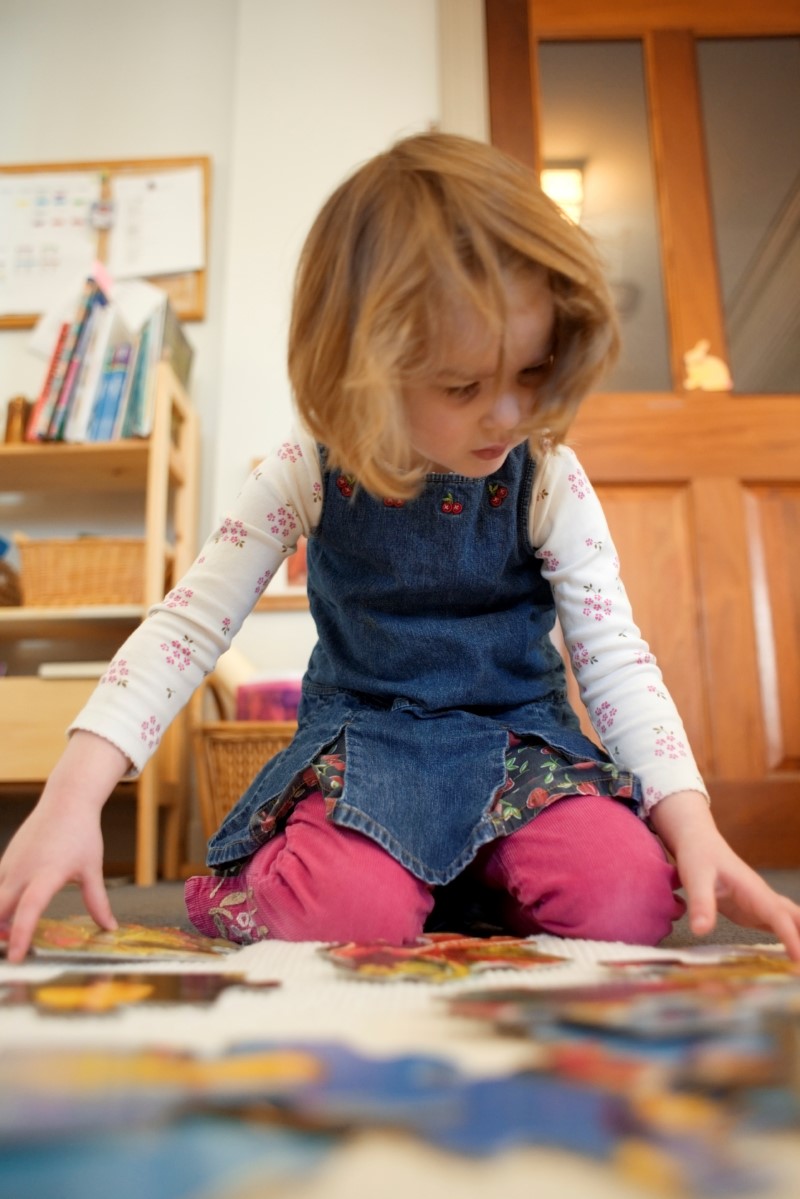
Children are natural learners. They are curious, interested, and eager learners. The best way to teach young children is to provide many opportunities for physical play, new experiences, hands-on activities, games, and pretend play.
They learn:
- by doing
- through movement
- by being noticed and encouraged
- through their senses
- by making things
- through language and stories
- by playing with other children
- through imitation
- through pretend play
Keeping Fit Family Style Helps Parents and Children Stay Healthy
Physical fitness is a habit that we learn. Children learn early to choose between sitting indoors and watching television or going outside to play ball. Parents teach fitness by their example. Do you eat a balanced diet? Do you limit sugar and salt? Are you physically active?
Now is a good time to get together as a family and get in shape. It is hard to find time in a busy schedule to exercise, but the rewards are worth the effort. Staying in shape helps you look better and feel better. Regular exercise helps you handle stress. Eating nutritious foods helps keep the heart, digestive tract and circulation running smoothly. Fewer major health problems and visits to the doctor save time and money.
My Plate for Preschoolers lists nutritious food suggestions and physical activity ideas for young children. What activities does your family enjoy? Have you tried any of these activities?
- short hikes
- swimming
- cycling
- running or walking
Appreciate the Joys of Being a Parent
Parenting is one of the hardest jobs anyone will ever have. It also seems to be the job we are least prepared for in our lives. There are positive rewards that are part of raising a child as well as challenges. Parenting offers an adventure in love, growth, and family meaning and is valued by all who care for children.
Remember to appreciate these things:
- Your child is special and unique. Enjoy each new word, facial expression, or funny comment your child makes.
- The depth of love you feel for your child is special. Raising a child offers parents a whole new experience in love that can be deep and powerful.
- You are feeling more confident and competent. Although some parents may doubt how good they are as parents, many come to feel more mature and responsible. Successfully raising a child is a source of accomplishment and meaning.
- Children encourage a sense of family bonding. Children often help create new connections between family members.
- Parenting helps you grow as a person. Parenthood provides the opportunity to guide, teach and pass on values to the next generation.
- Parenting helps you understand your own parents more. Having a child may help parents see their own parents in new light.
Is Your Child’s Preschool Program Matching Their Needs?
Going to preschool on a regular basis is a big deal for a four-year-old. How can you be sure that the preschool is meeting your child’s needs? It is best for your child’s development if your child’s school considers their unique capabilities in planning the program:
- Schools that meet children’s needs are based on the ways children learn, not on how adults prefer to teach.
- Since young children learn best through their senses and by doing, learning needs to take place through play.
- Young children need to be in groups no larger than the recommended class sizes — which are two adults to twenty 3- to 5-year-olds.
- Children need to be evaluated by observation — not simply tested for success or failure. Letter grades should never be used.
- Children learn more quickly if they are actively involved in learning. They need to act out what they have learned, touch objects, and see places and people in the community. They need teachers who help them investigate their questions, read to them and talk with them.
Listen. Listen. Listen!

“No one really listens to me.”
Children sometimes have this feeling. Listening is an active process of hearing and trying to understand your child’s messages. Listening gives you a chance to understand how your child is feeling and shows your child how to listen to others. If you are in a rush, make a date with your child to talk later — and be sure to keep it!
Listen Patiently
- Children take longer than adults to find the right word. Listen as though you have plenty of time.
- Hurrying children or calling attention to their use of the wrong word while they are talking is upsetting and confusing.
- Avoid cutting children off before they have finished speaking.
- Do not correct your child’s grammar or pronunciation. Instead use correct grammar when you speak.
Be Interested and Pay Attention
- Children can tell if you’re interested by the way you reply or don’t reply.
- Keep eye contact to show you are really with the child.
- Show an interest in their activities so they express their feelings. It will help them feel important.
- Get down on their level; do not stand and tower above them.
- Children feel closer to adults who express concern and caring and get them to talk about themselves.
Reflect Feelings
- Sometimes just reflecting a child’s feelings back to them encourages them to tell you what’s on their mind. Saying, “You’re really feeling sad today, aren’t you?” will help your child share their feelings more than asking, “What’s wrong?”
Learn to “Extend” the Conversation
- Good communication between parents and children happens when parents take the time to really listen to children’s feelings and ideas.
- A conversation is a two-way street — back and forth between parent and child.
- It doesn’t count when the adult does all the talking — or asks a bunch of questions.
Start now so that when your child is a teenager they will want to talk with you.
Use these hints to have a conversation with your child:
- Encourage talking. Some children need to be invited to start talking. You might begin with, “Tell me the best thing about your day at school.” Children will share their ideas and feelings when others think they are important.
- Ask children the kinds of questions that will require more than “yes” or “no” or right answers. Simple questions such as, “What is the dog’s name?” are a dead end to a conversation. Questions such as, “What do you like about the dog?” or “What other dogs have you played with?” Keep the conversation going.
- If your child says, “I like to watch TV,” then answer by using some of the same words your child has used. “What are some of the TV shows you like best?” If they say, “Sesame Street,” your response could be, “What happens on Sesame Street that you like seeing?” Avoid asking too many questions, though.
- Provide some of your own information such as, “I think Bert and Ernie are my favorite Sesame Street characters.”
Be a good role model by waiting your turn to speak.
- Parents who listen to their children with interest, attention and patience set a valuable example.
- The greatest audience children can have is an adult who is important to them and interested in them.